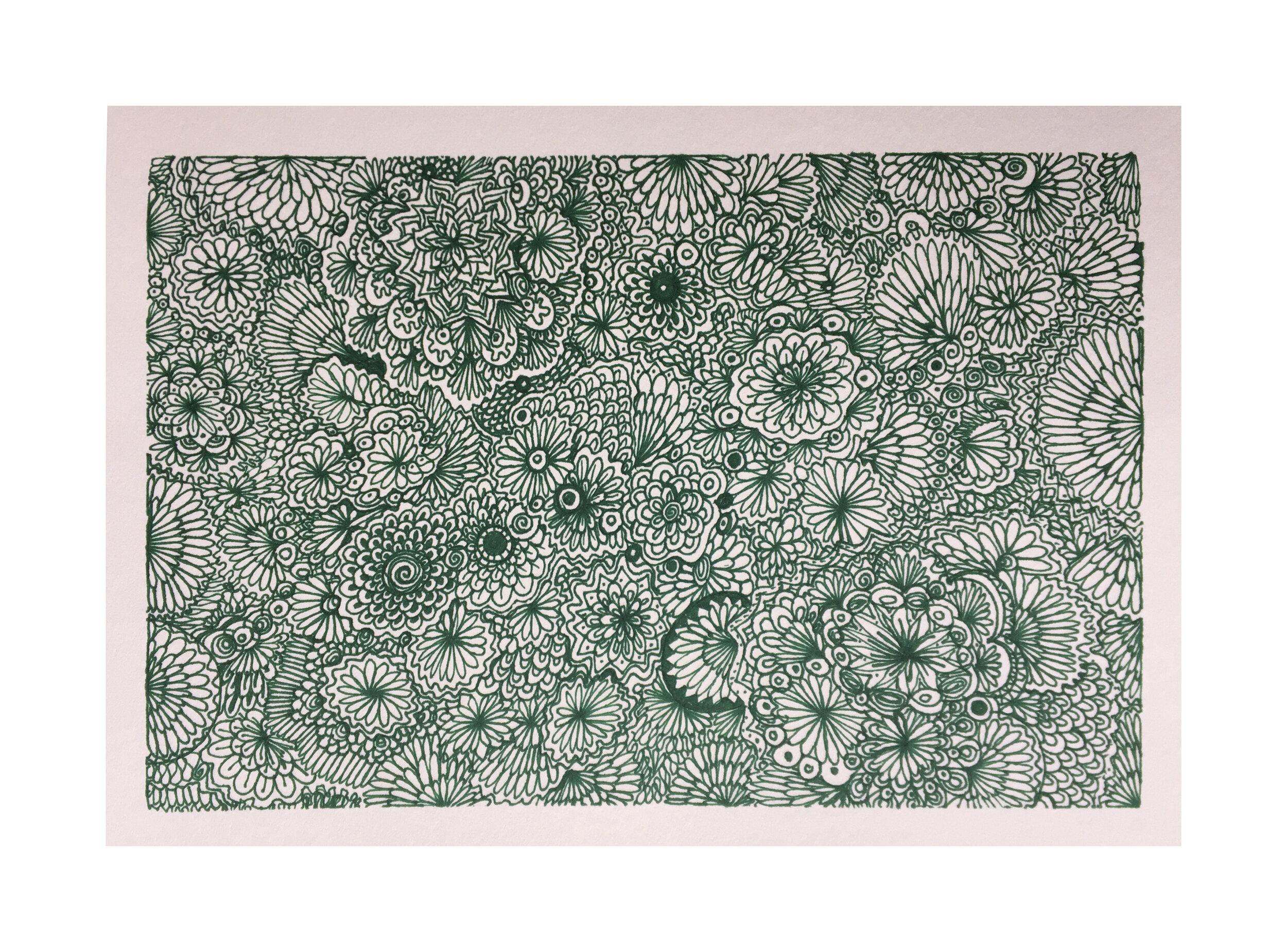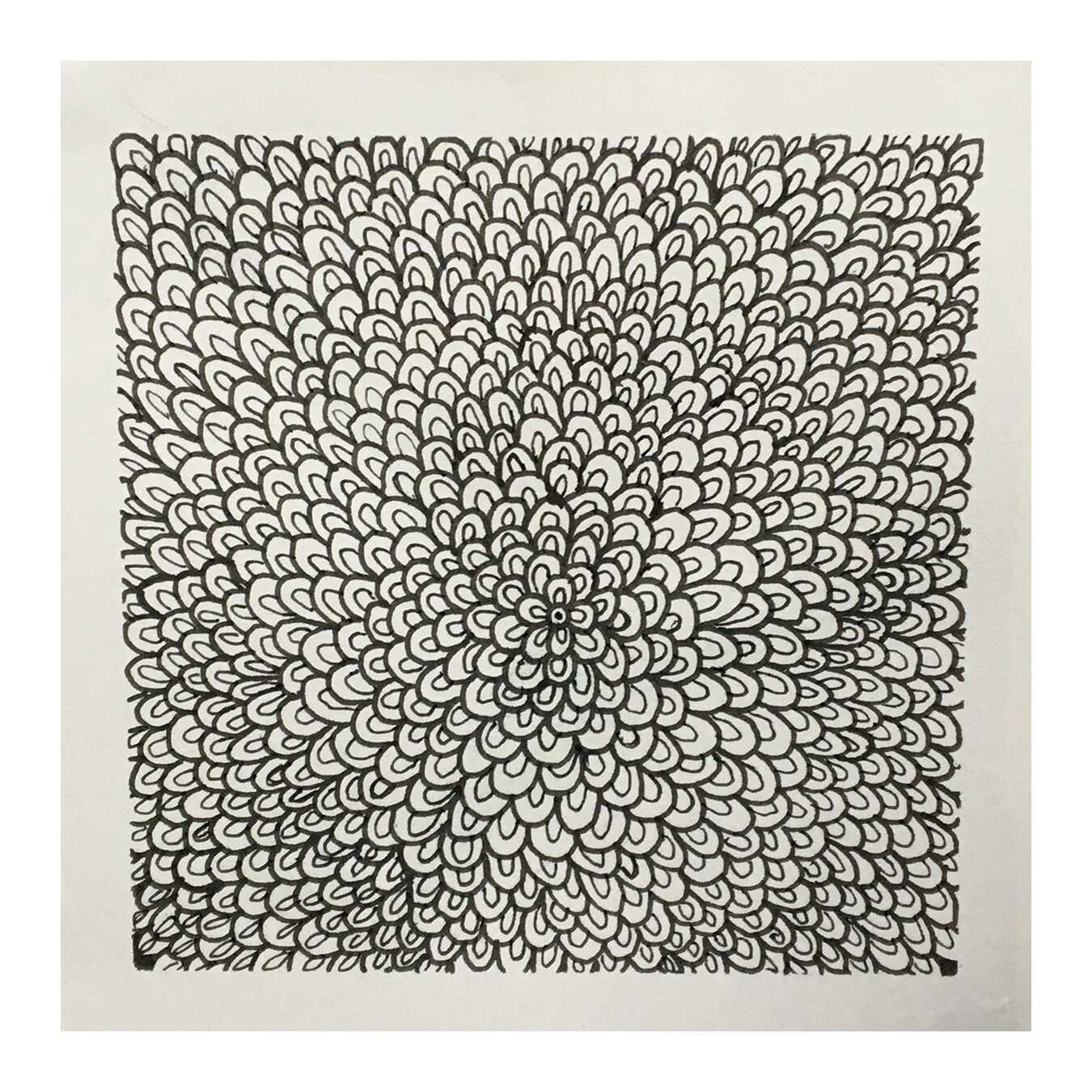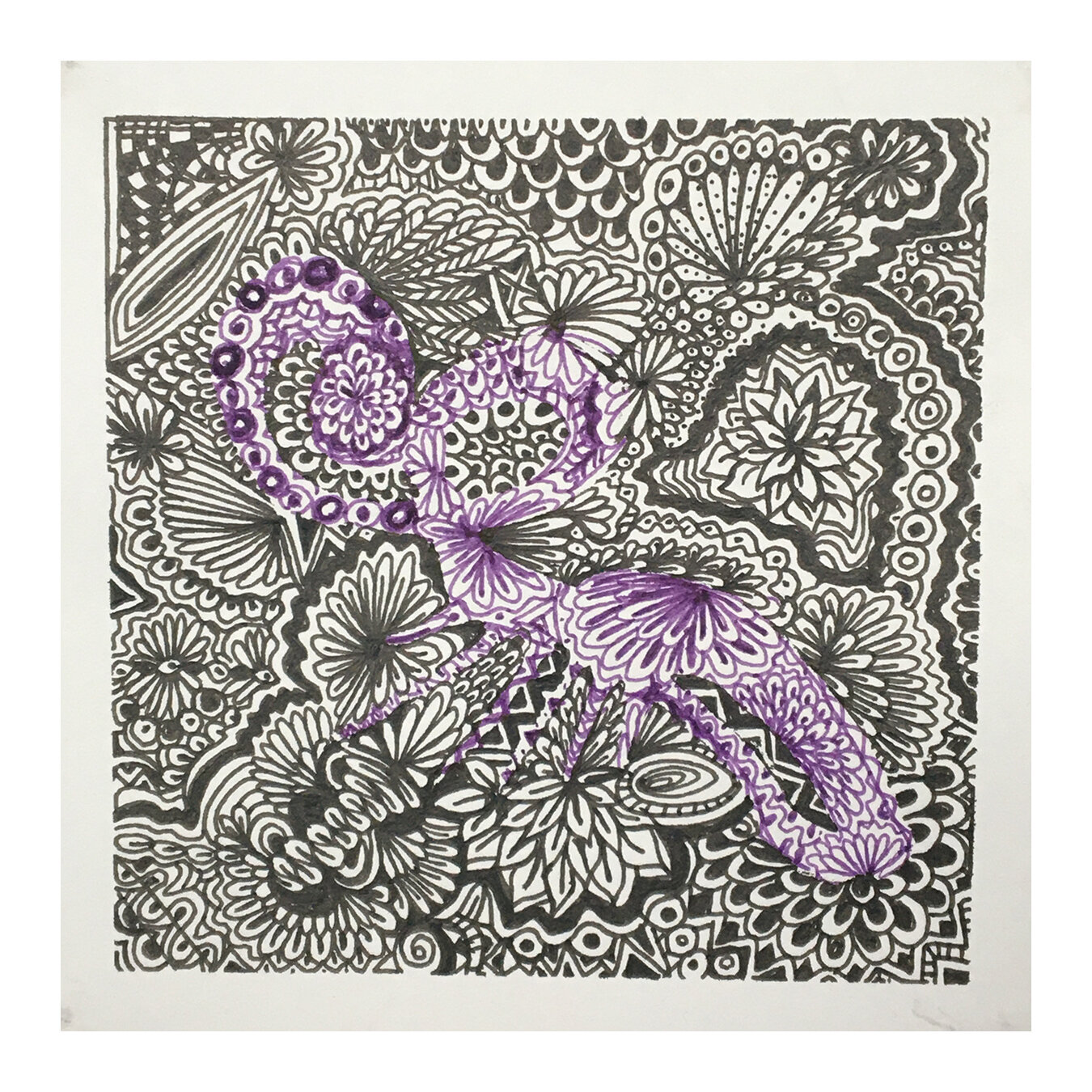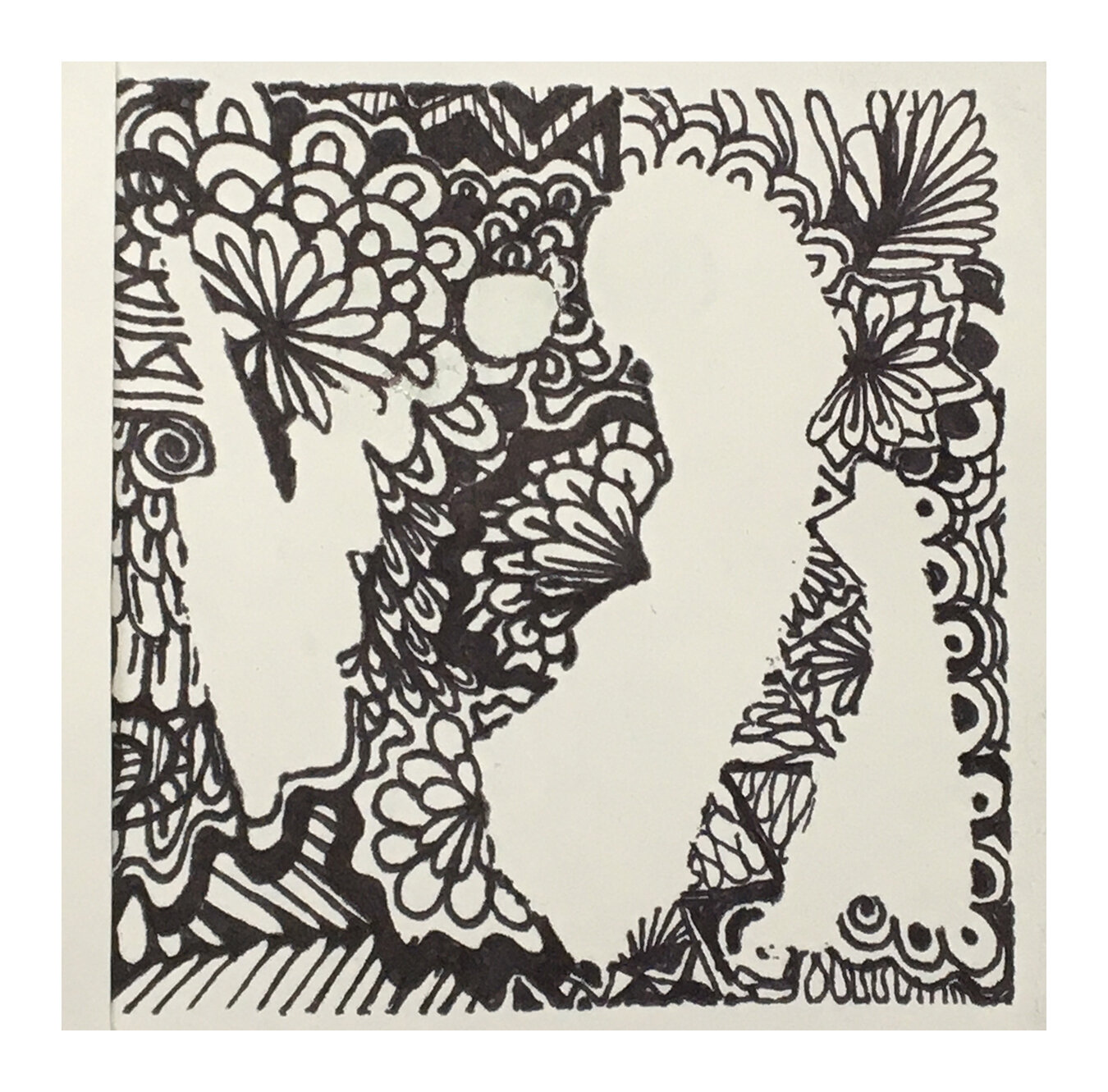Dale Hindman has an eye for realism but a love for abstraction. She has a diverse understanding of media and technique. She finds herself working most often in monotones with graphite or pen. She has been studying studio art for the last 5 years at Arkansas State, but has had a pencil in hand for most of her life. She obtained two State level awards during her high school career. She has been in several on campus exhibitions, as well as a few juried shows also occurring on Astate’s campus. Selective pieces are in private collections in locations spanning from Jonesboro to Little Rock, AR, as well as in Bullard TX, and Venice, FL.
Through intricate line and playful repetition, she uses the process of doodling to become aware of herself. She wants the world to be more aware of how their awareness are being influenced. Doodle art is sometimes capable of reassuring its creator. A doodle work usually portrays feelings of the author that have slipped out, unnoticed by conscious thoughts. It makes this kind of work not just a mere drawing activity, but also an art form with depth of meaning and style.
Flow of thoughts:
This series relates to my interest in the use of line through doodling and the flow of thought. The wonderful thing about doodling is that it is a whole brain activity—spontaneous, at times unconscious, self-soothing, satisfying, exploratory, memory-enhancing, and mindful. I become very meditative in my movements while working on an intricate piece of doodles or mandalas. Ancient Hindu scriptures depict mandalas as a period of creativity, of powerful existence, and a symbol of deeper connection with the self and the universe at large. I like to think the paper tells me what markings need to be where. It is its own road map. I think about the fluidity of how the media moves, bleeds and is controlled by the hand and mind.I try to allow my thoughts to float from one idea to another while I doodle. There is a forced vulnerability that comes with not being in control. There is an odd unmounted sensation of peace in understanding doodle art has no rules, no restrictions. It’s like a nullifier.
In any other circumstance, the lack of guidelines tailspin me into rippling waves of anxiety. I often struggle in providing myself with solid structural plans or road maps. Anxiety associated with time usually aids only in prolonging the procrastination process.
Doodles and Mandala’s alike are presumably disregarded by scholars on reasonable grounds: they differ in form and intention from the verbal text; they represent a break from the creative process – a product of absentmindedness. In the mindlessness of my actions I honestly too often find myself lost in life. This debacle with myself is frustrating as I understand too well what it is to dawdle. I know I am a fool. Johan Adam Warodell, author of "Conrad the Doodler'' defines the art form, “A doodle is there defined as a rough drawing, made idly, carelessly, or absentmindedly. Etymologically, the word is rooted in a German noun for ‘a fool’ (Dudeltopf) and in the English verb ‘to dawdle’.” By moving his doodles from the margins of his manuscript to the center of discussion, a visual portrait emerges of an artist for whom ‘procrastination’ and productivity worked in delayed symbiosis.
The process of moving an idea into the pen then on to paper is of the few times I don’t have time anxiety. Within the extensive time it takes to produce each piece is when I consider myself to find the most structure. I transition further into a meditative state with each pen stroke. For the sheer amount of detail and form within negative spaces my mind’s eye stays active in a passive state. In essence doodling can be a self-regulating experience as well as a pleasurable road map of ideas as the line of thought can go anywhere.
Rough Around the Edges, Red Sharpie, approx. 12 x 20 inches


















































